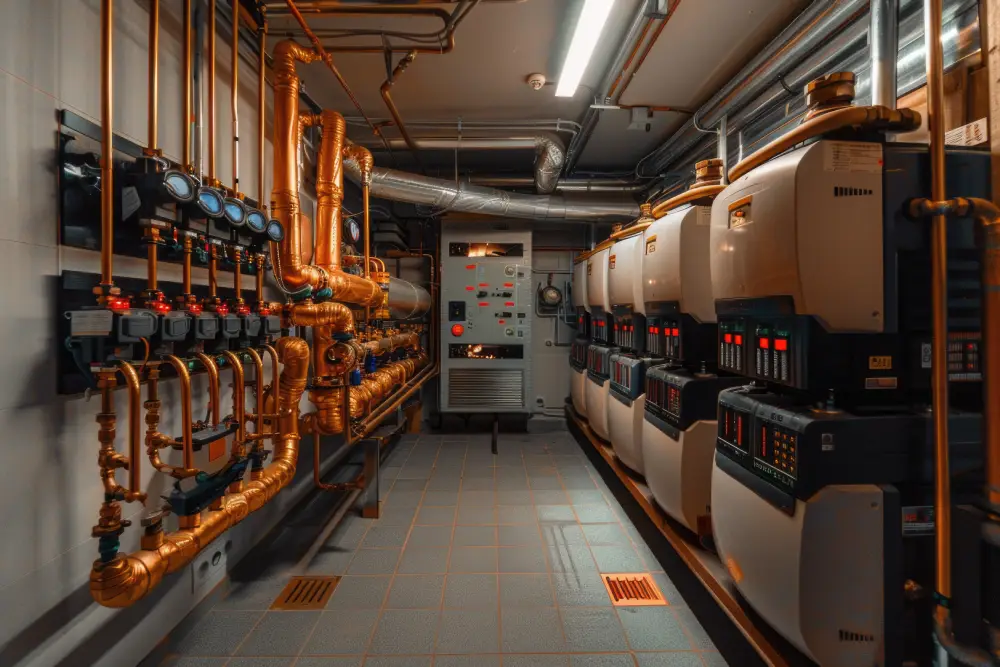In today’s rapidly advancing world, commercial buildings are evolving beyond concrete, steel, and glass—they’re becoming intelligent ecosystems. Smart building technology is transforming how mechanical, electrical, and plumbing (MEP) systems are designed, monitored, and maintained. These connected systems help optimize performance, cut energy costs, and enhance occupant comfort—all while reducing a building’s environmental footprint.
As we move through 2025, integrating smart technology into MEP systems is no longer a luxury—it’s an expectation. Here’s how innovation and intelligence are reshaping the future of modern infrastructure.
Understanding Smart Building Technology
Smart building technology combines automation, sensors, data analytics, and cloud connectivity to make building operations more responsive and efficient. It leverages the Internet of Things (IoT) to connect MEP systems into a unified digital ecosystem.
In simple terms, this means:
- Sensors gather real-time data from HVAC, lighting, water, and power systems.
- AI-driven software analyzes this data to detect inefficiencies or potential faults.
- Building Management Systems (BMS) automatically make adjustments to maintain comfort and reduce waste.
This integration leads to smarter decisions, lower operating costs, and greater sustainability.
Why MEP Systems Are Central to Smart Building Design
MEP systems represent the heart of any building’s functionality. When combined with smart technology, they transition from static infrastructure to dynamic, self-learning networks.
- Mechanical systems (HVAC, elevators) become adaptive and predictive.
- Electrical systems gain energy monitoring and load-balancing capabilities.
- Plumbing systems can detect leaks, track water usage, and optimize heating.
By integrating these traditionally independent systems, building owners gain holistic visibility and control—essential for managing complex commercial environments.
Key Benefits of Integrating Smart Tech into MEP Systems
- Improved Energy Efficiency
Smart sensors and analytics reduce unnecessary power usage. Lighting, HVAC, and other electrical systems can automatically adjust based on occupancy and time of day. - Predictive Maintenance
IoT sensors continuously monitor system health, alerting maintenance teams before breakdowns occur—saving both time and money. - Enhanced Occupant Comfort
Smart HVAC and lighting systems maintain ideal temperature and lighting conditions automatically, improving comfort and productivity. - Sustainability and Compliance
Smart systems help buildings achieve green certifications such as LEED, WELL, and ENERGY STAR, aligning with environmental goals and regulations.
Technologies Powering Smart MEP Integration
Smart MEP integration relies on a combination of cutting-edge technologies that work in synergy to optimize performance and control.
| Technology | Function | Impact on MEP Systems |
|---|---|---|
| IoT Sensors | Collect data on temperature, humidity, flow, and energy usage | Enable real-time monitoring and automation |
| Building Management Systems (BMS) | Centralized platform for control and analytics | Optimizes HVAC, lighting, and plumbing operations |
| Artificial Intelligence (AI) | Predicts system behavior and detects inefficiencies | Facilitates predictive maintenance and energy optimization |
| Cloud Connectivity | Stores and processes data remotely | Allows remote control and performance benchmarking |
| Digital Twins | Virtual replicas of physical systems | Simulate performance and test design adjustments |
These technologies not only enhance automation but also create a foundation for continuous improvement in building operations.
Integration Strategies for Smart MEP Systems
1. Unified Building Platforms
Integrating smart MEP systems requires a centralized digital infrastructure. Modern Building Management Systems or Integrated Building Platforms (IBPs) can connect mechanical, electrical, and plumbing systems to a single interface, simplifying control and analysis.
2. Open Protocols and Interoperability
To ensure seamless data sharing, engineers should use open communication protocols like BACnet, Modbus, and KNX. These standards allow devices from different manufacturers to “talk” to one another—critical for long-term scalability.
3. Data Analytics and Visualization
Smart dashboards transform raw data into actionable insights. Real-time visualization helps facility teams track efficiency, energy usage, and maintenance trends, leading to better decision-making.
4. Cybersecurity Measures
With increased connectivity comes increased risk. Implementing robust cybersecurity protocols—such as encrypted communication, network segmentation, and regular software updates—is essential for protecting building data and operations.
Real-World Example: The Data-Driven Building
Consider a modern office tower equipped with a smart MEP system:
- The HVAC adjusts automatically based on occupancy sensors and weather forecasts.
- Lighting systems dim when daylight is sufficient, reducing power load.
- Water usage data from plumbing systems identifies leaks instantly.
- Maintenance alerts are sent before a motor or pump fails.
This real-time orchestration of systems not only saves operational costs but also ensures superior comfort and sustainability.
The Future of Smart MEP Integration
By 2030, experts predict that over 80% of commercial buildings will feature integrated smart technologies within their MEP systems. These systems will be deeply intertwined with renewable energy sources, AI-driven energy management, and even occupant wellness metrics.
Future trends include:
- Self-learning systems that adjust to human behavior patterns
- Edge computing for faster data processing
- Automated carbon tracking to support ESG (Environmental, Social, and Governance) reporting
In essence, smart MEP systems will evolve from simply supporting buildings to actively enhancing the lives of those inside them.
Conclusion
Integrating smart technology into MEP systems is more than an upgrade—it’s a transformation. Buildings that embrace this shift gain operational intelligence, lower energy bills, and improved comfort for occupants.
As industry leaders like Budlong continue to pioneer MEP innovation, the line between mechanical engineering and digital intelligence will continue to blur—ushering in an era of smarter, safer, and more sustainable commercial buildings.

